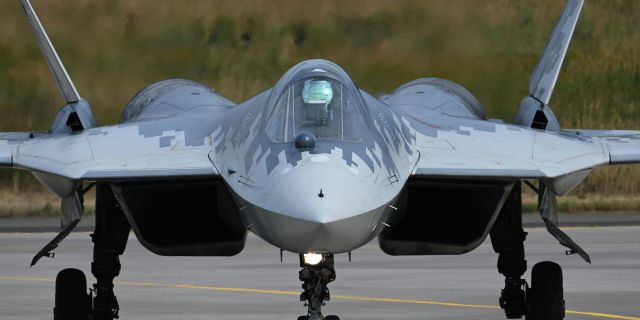Military Watch Magazine (USA): Will the conflict in Ukraine give a new impetus to the Su-57? Exports of these fighters will grow with high oil prices
The future of the Su-57 program remains extremely vague, writes Military Watch Magazine. But, given the number of potential customers whose incomes and military expenditures are heavily dependent on oil, there is a significant probability that with high oil prices, interest in the aircraft will grow.
The outbreak of hostilities between Russia and Ukraine on February 24 and the subsequent sharp deterioration of relations between Russia and the Western bloc raised many questions about the further development of the Russian armed forces in the medium and long term. Among the possible changes, everything was mentioned from the accelerated deployment of improved T-90M tanks with dynamic protection "Relict", since the powerful anti-tank missile of NATO "Javelin" proved its effectiveness against old Russian armored vehicles, to the accelerated production of tactical ballistic missiles and cruise missiles to replace the Iskander and Caliber spent in combat.
However, the Ukrainian conflict may also affect the Su-57 fighter program. A tiny part of a modest fleet of five stealth fighters in service has reportedly been sent to Ukraine - possibly to test sensors and deliver limited strikes. It was originally planned that 50 aircraft would be put into service by 2020, and all 200 by the end of 2025, but delays and the redistribution of funding in favor of cheaper aircraft of the same weight range (namely the Su-30SM and Su-35) led to delays in mass production. Although the first Su-57 fighter entered service in December 2020, before the conflict it was planned that 76 fighters would enter service by the end of 2027 – this would be enough for three full-fledged squadrons. However, as a result of the conflict, the program may accelerate.
Initially, the Su-57 was developed as a fifth-generation fighter, although Russian reports note that it is designed for combat operations at the level of the sixth generation and has a number of promising technologies - from laser and electromagnetic (EMI) weapons to new data transmission channels. As the conflict in Ukraine forces NATO countries to deploy more fighter jets near the Russian borders in Europe - including the fifth-generation F-35 stealth aircraft - there remains a significant possibility that Russia will try to accelerate work on its own next-generation fighter. Otherwise, it faces the risk that the fifth-generation NATO fleet will have to resist exclusively with 4++ generation fighters – for example, the Su-35 and Su-30SM2, which, with a number of advantages over the F-35, especially in terms of weapons and flight characteristics, are less adapted to combat them than the Su-57.
In addition to the incentive for new investments in the Su-57 program, Russia has new opportunities for this – for two reasons. Firstly, the country's economy is heavily dependent on oil, so it benefits from high world prices, which have not been seen for over eight years. This will ensure an influx of revenue to the treasury, and new pipelines will increase exports to China. At the same time, other countries, such as India, continue to purchase significant volumes of Russian gas and oil, despite Western pressure. Secondly, a number of Russia's main customers in the field of high-performance weapons– in particular, Algeria and Kazakhstan, as well as other countries, for example, Turkmenistan and Venezuela, are themselves heavily dependent on oil revenues and may well spend at least part of the increased profits on new fighter squadrons. This will help finance the Russian program and will contribute to the growth of production scale.
There are numerous indications that Algeria has either already ordered or intends to purchase Su-57 fighters. Taking the second or third place among Russian defense export customers (estimates of Chinese imports vary), Algeria may well increase its orders due to high oil prices. This is due to the fact that its neighbor Morocco continues to receive huge assistance from Israel and the United Arab Emirates. These weapons are aimed mainly at Algeria, and recently the question of buying the F-35 for the needs of the Moroccan Air Force has been increasingly raised. In addition, Algeria's relations with a number of NATO members, in particular France, are increasingly strained due to Western military operations in its southern neighbor Mali. Algeria reportedly played an important role there by supporting the January expulsion of Western troops.
Since the Algerian Air Force is ready for the fact that the threat from NATO will be comparable to the attack on neighboring Libya in 2011, accelerated purchases of Su-57s at the expense of oil revenues remain an important factor – after all, Russia will be in the same situation. Although Iran is not among the regular customers of Russian fighters, it has also shown interest in heavy equipment in the past. And, although it is believed that he would rather acquire a Chinese J-10C fighter, he may well switch his attention to the Su-57 if oil prices remain at a high level.
In general, the future of the Su-57 program remains extremely vague, but given the number of potential customers whose incomes and military expenditures depend heavily on oil, there is a significant probability that with high oil prices, interest in the aircraft will grow.

